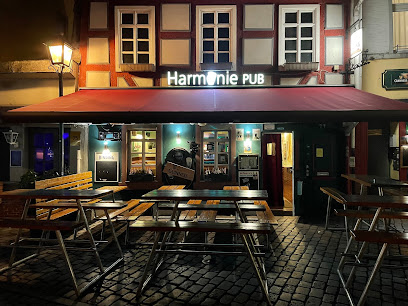
Frankfurt's Historical Heartbeat
Explore Frankfurt's captivating history at the Historisches Museum, from Roman settlements to a modern metropolis, through immersive exhibits and historical artifacts.
The Historisches Museum Frankfurt, the city's oldest museum, offers a captivating journey through Frankfurt's rich history, from its Roman origins to the present day. Located in the heart of the old town, the museum comprises the 800-year-old Saalhof and a modern extension opened in 2017. Explore diverse exhibits spanning 6,000 square meters, covering politics, culture, art, and daily life. Discover artifacts, documents, and artworks that tell the story of Frankfurt's evolution into a major European hub. Don't miss the detailed model of pre-WWII Frankfurt and the thought-provoking City Lab, which addresses contemporary urban issues. With its engaging displays and central location, the Historisches Museum is a must-see for anyone seeking to understand Frankfurt's past and present.
A brief summary to Historisches Museum Frankfurt
- Saalhof 1, Frankfurt, Innenstadt I, 60311, DE
- +496921235154
- Visit website
Local tips
- Visit the museum on a Saturday for free admission as part of 'Satourday', a city-wide initiative offering free access to many museums.
- Allow at least 3-4 hours to fully explore the extensive exhibits, spanning from medieval times to the present day.
- Check the museum's website for special exhibitions and events that may coincide with your visit.
- Take advantage of the multimedia guide (available for a small fee) for in-depth information on key exhibits.
- Visit the Junges Museum (Young Museum) within the complex for engaging, kid-friendly exhibits.
Getting There
-
Public Transport
The Historisches Museum is easily accessible via public transport. Take the U-Bahn U4 or U5 to the 'Dom/Römer' station, or tram lines 11 or 12 to 'Römer/Paulskirche'. From either stop, it's a short 5-minute walk across the Römerberg towards the Main riverbank. A single ride on the U-Bahn or tram costs approximately €3.
-
Walking
From the Frankfurt-Hauptwache S-Bahn station, it's about a 10-minute walk to the Historisches Museum. Head in the direction of the Römer (city hall). The museum is located on the Römerberg. This is a free option.
-
Taxi/Ride-Share
A taxi or ride-share from Frankfurt Hauptbahnhof (main train station) to the Historisches Museum will take approximately 5-10 minutes, depending on traffic, and cost around €8-€15.
-
Driving
If driving, be aware that parking in the immediate vicinity of the Römerberg is limited and can be expensive. Consider parking at the Dom Römer car park (Domstr.) or Hauptwache car park (Kornmarkt 10). Hourly rates typically range from €3-€5.
Discover more about Historisches Museum Frankfurt
Iconic landmarks you can’t miss
Historisches Museum Frankfurt
0.0 km
Explore Frankfurt's captivating history at the Historisches Museum, from Roman settlements to a modern metropolis, through immersive exhibits and historical artifacts.
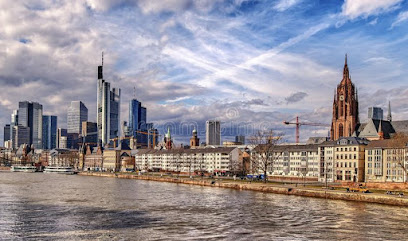
Mainkai
0.0 km
Discover Frankfurt's vibrant heart on Mainkai, a scenic riverside promenade blending history, culture, and stunning views of the Main River and city skyline.
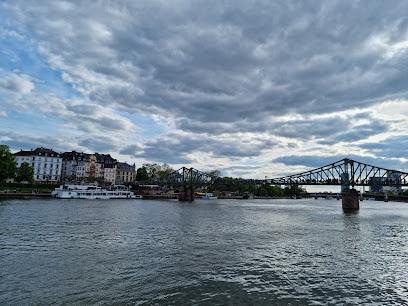
Gedenktafel Bücherverbrennung
0.1 km
Discover the Gedenktafel Bücherverbrennung, a poignant memorial in Frankfurt highlighting the importance of free expression and the history of censorship.
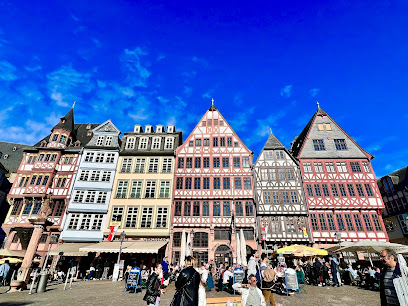
Eiserner Steg
0.1 km
Walk across Frankfurt's iconic Eiserner Steg, a historic bridge adorned with love locks, offering stunning skyline views and connecting the city's vibrant heart with the charming Sachsenhausen district.
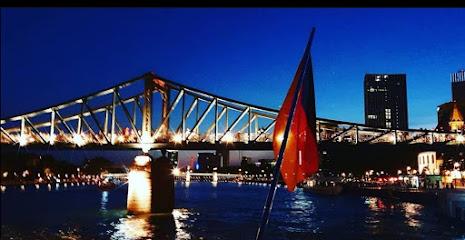
St. Paul's Church, Frankfurt am Main
0.2 km
Visit the Paulskirche in Frankfurt: a symbol of German democracy, where the first German parliament convened in 1848, shaping the nation's path towards unity and freedom.
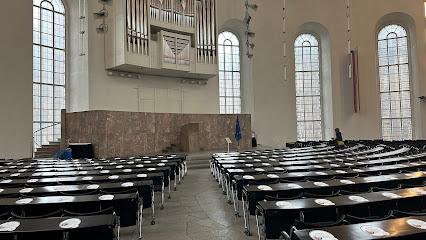
Charlemagne Monument
0.4 km
Explore the Charlemagne Monument in Frankfurt, a stunning tribute to history and culture that captivates visitors with its grandeur and significance.

Alte Brücke
0.4 km
Discover the Alte Brücke, Frankfurt's historic bridge offering stunning views and a glimpse into the city's architectural heritage.

Steigenberger Frankfurter Hof
0.5 km
Experience timeless luxury in the heart of Frankfurt at the Steigenberger Frankfurter Hof, where historical elegance meets modern sophistication, offering Michelin-starred dining and a world-class spa.

Roßmarkt
0.5 km
Discover Frankfurt's historic Roßmarkt, a vibrant square blending medieval roots with modern city life, home to the Gutenberg Monument and a hub for festivals and shopping.
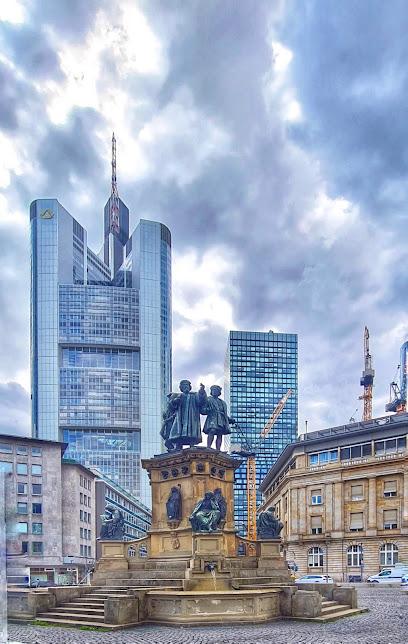
Gutenberg-Denkmal
0.5 km
A historical landmark in Frankfurt's city center, commemorating Johannes Gutenberg's revolutionary invention of printing with movable type and its impact on the world.
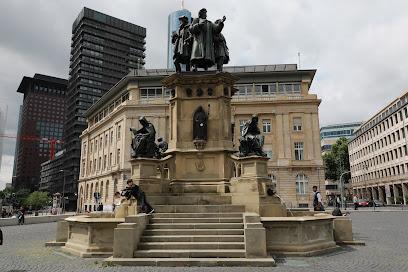
Staufenmauer
0.5 km
Discover the historic Staufenmauer in Frankfurt, a remarkable landmark that offers a glimpse into the city's medieval past amidst a vibrant urban landscape.
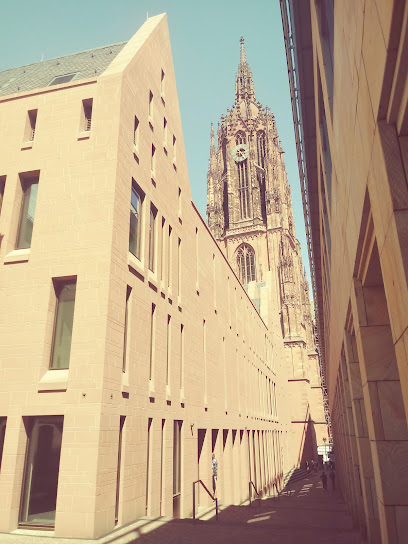
Brockhaus Fountain
0.6 km
A thought-provoking marble sculpture on Frankfurt's Zeil, the Brockhaus Fountain blends artistry and social commentary, sparking dialogue amidst the city's bustling heart.
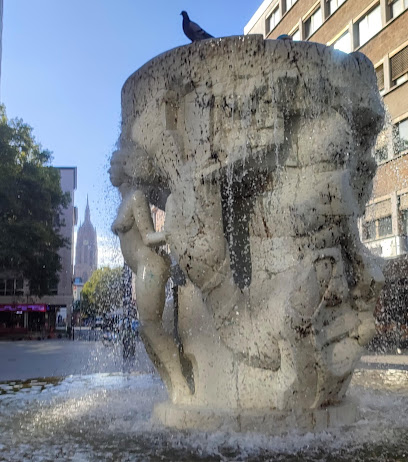
An der Hauptwache
0.6 km
Experience Frankfurt's vibrant heart at Hauptwache, a historic square blending baroque architecture with modern shopping and dining, offering a central hub for exploring the city.
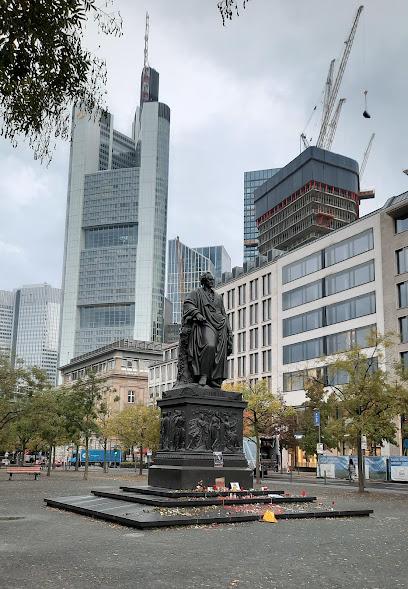
Goethepl.
0.6 km
Explore Goetheplatz in Frankfurt, a vibrant square rich in culture, art, and history, perfect for immersing in the city's local life.
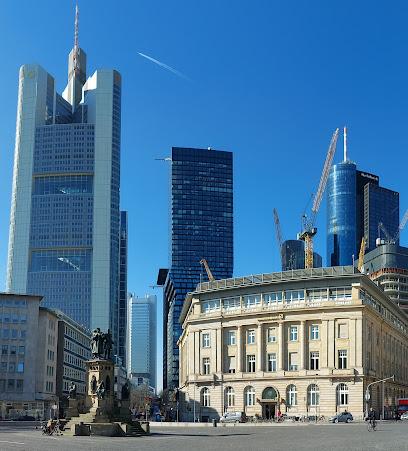
Old Jewish Cemetery frankfurt am main
0.7 km
Explore the rich history and serene beauty of the Old Jewish Cemetery in Frankfurt, a historical site that honors the legacy of the Jewish community.
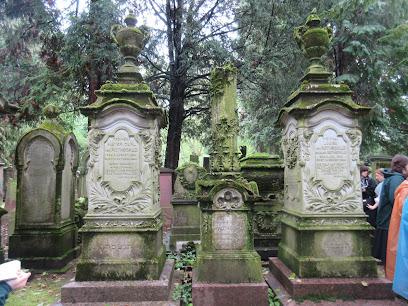
Unmissable attractions to see
Saalhof mit Rententurm
0.0 km
Explore the Saalhof with Rententurm, a historical gem in Frankfurt that offers a glimpse into the city's rich medieval heritage and stunning architecture.
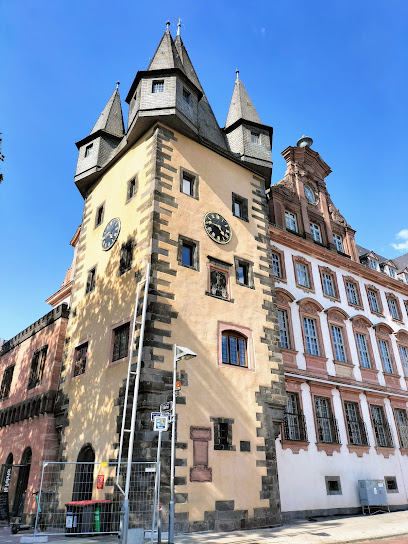
Alte Nikolaikirche
0.1 km
Discover the beauty and history of Alte Nikolaikirche, an architectural gem in Frankfurt's Römerberg, reflecting the city's rich spiritual heritage.
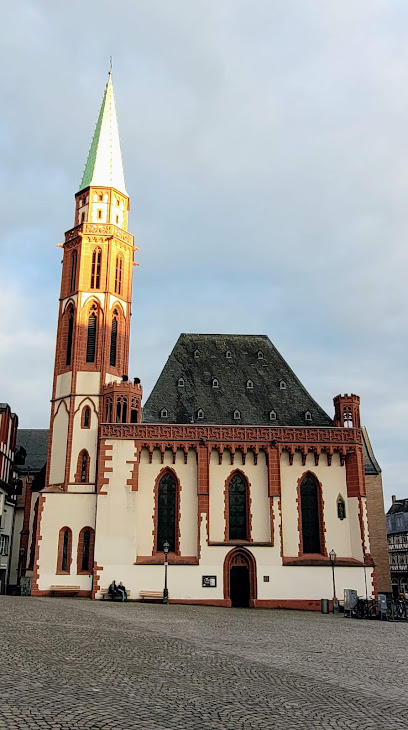
Römerberg
0.1 km
Explore Römerberg, Frankfurt's iconic historical market square, where medieval charm meets vibrant culture and rich history.

Alten Limpurg
0.1 km
Experience authentic German cuisine in a historic setting at Alten Limpurg, a charming bistro in the heart of Frankfurt's Römerberg.
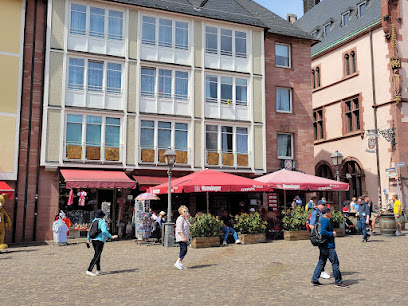
Weihnachtsmarkt am Römer
0.1 km
Experience the festive spirit at Weihnachtsmarkt am Römer, Frankfurt's iconic Christmas market, filled with lights, treats, and holiday cheer.
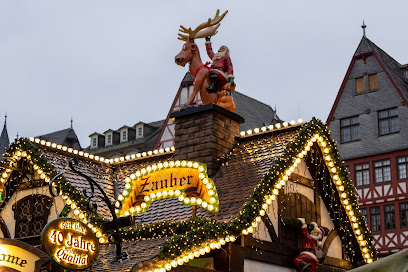
Fountain of Justice
0.1 km
Discover the iconic Fountain of Justice in Frankfurt's Römerberg square, a stunning symbol of justice surrounded by medieval charm and vibrant culture.
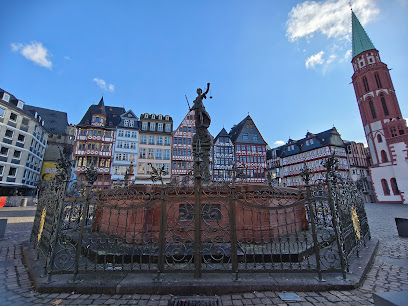
Minervabrunnen
0.1 km
Discover the historical charm of Minervabrunnen, a stunning fountain in Frankfurt's Römerberg square, rich in culture and architectural beauty.
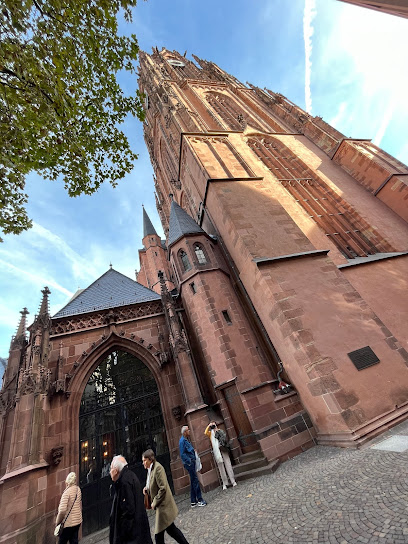
Schirn Kunsthalle Frankfurt
0.1 km
Explore contemporary art and dynamic exhibitions at Schirn Kunsthalle Frankfurt, a leading modern art museum in the heart of the city.
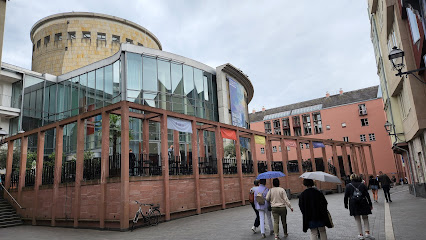
Kaisersaal
0.1 km
Explore the Kaisersaal in Frankfurt, a stunning historical landmark embodying the city's rich cultural heritage and architectural beauty.
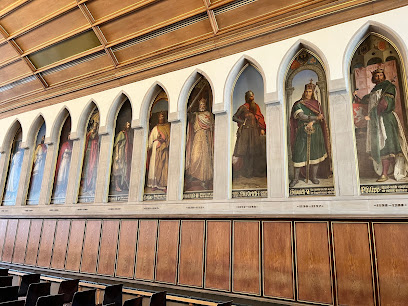
Frankfurter Römer
0.1 km
Explore the iconic Frankfurter Römer, a stunning historical landmark and vibrant plaza in Frankfurt, steeped in culture and rich history.
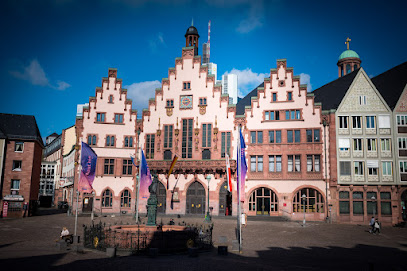
PubCrawl Frankfurt
0.1 km
Explore Frankfurt's vibrant nightlife with PubCrawl Frankfurt, where adventure meets local culture for an unforgettable pub experience.
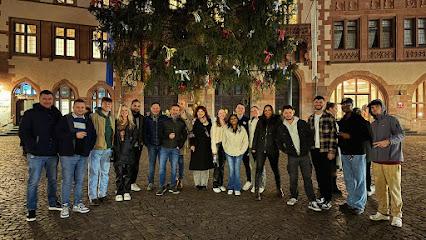
Krönungsweg
0.1 km
Explore the enchanting Krönungsweg, a historic landmark in Frankfurt that beautifully blends heritage with vibrant city life.
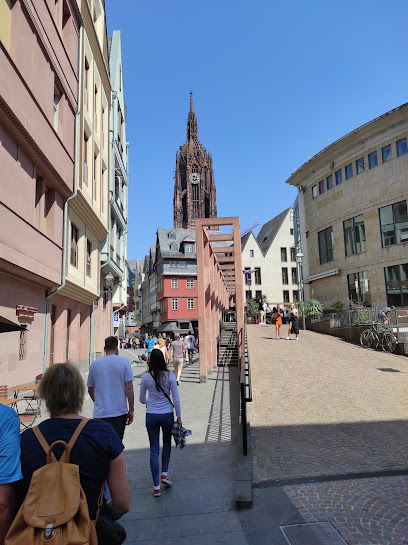
Iron Footbridge
0.2 km
Explore the historical Iron Footbridge in Frankfurt, a charming pedestrian bridge offering stunning skyline views and a glimpse into the city's rich history.
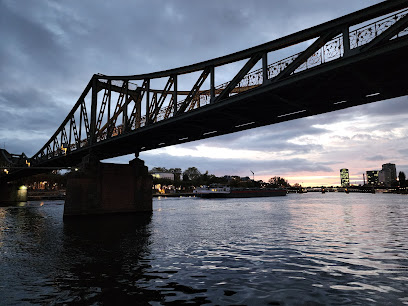
Frankfurt Tourist Information Römer
0.2 km
Explore Frankfurt's history, culture, and attractions at the Römer Tourist Information Center, your essential guide in the heart of the city.
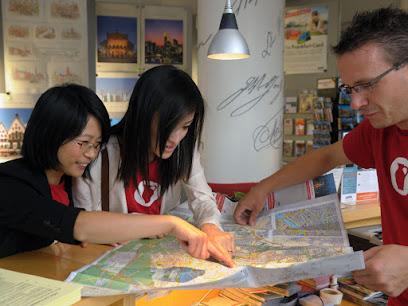
Roman Ruins
0.2 km
Explore the Roman Ruins in Frankfurt, a captivating archaeological museum showcasing the remnants of a once-thriving Roman civilization.
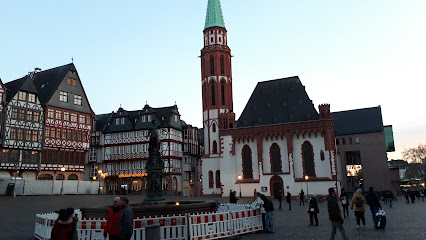
Essential places to dine
Haus Wertheym
0.0 km
Discover authentic German flavors at Haus Wertheym, where tradition meets taste in the heart of Frankfurt.
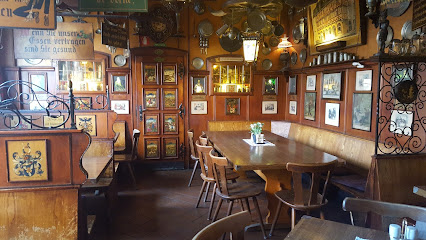
Schwarzer Stern
0.1 km
Experience authentic German cuisine at Schwarzer Stern in Frankfurt—where tradition meets taste in every dish.
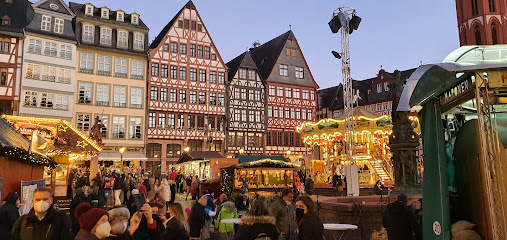
Zum Standesämtchen
0.1 km
Experience authentic German cuisine at Zum Standesämtchen in Frankfurt's vibrant heart—delicious dishes await!
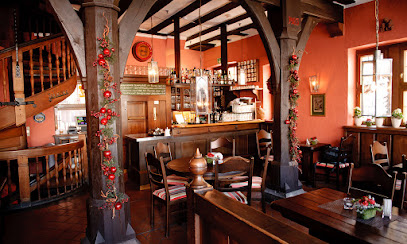
Gaststätte Zum Storch
0.2 km
Discover the charm of traditional German dining at Gaststätte Zum Storch in Frankfurt - where every meal tells a story.
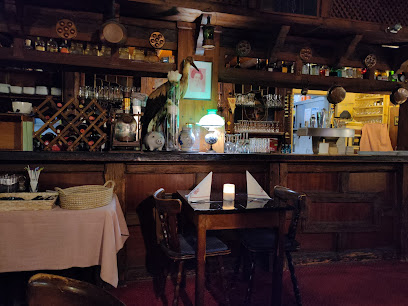
Gasthaus Zum Eisernen Steg
0.3 km
Experience authentic German cuisine at Gasthaus Zum Eisernen Steg by the beautiful River Main in Frankfurt – a must-visit gastropub for every traveler.
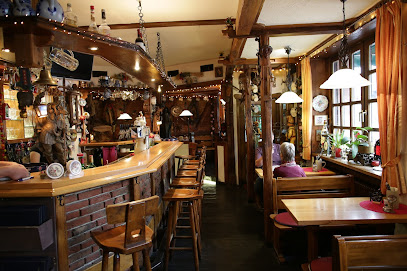
Paulaner am Dom
0.3 km
Savor traditional German flavors at Paulaner am Dom in Frankfurt—where authentic cuisine meets vibrant atmosphere.

SEVEN SWANS
0.3 km
Experience exquisite vegan cuisine at Seven Swans, where innovative dishes meet stunning riverside views in Frankfurt's vibrant culinary scene.
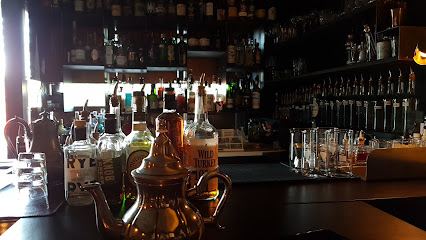
Panamaa Restaurant & Bar - Frankfurt am Main
0.4 km
Experience culinary delight at Panamaa Restaurant & Bar in Frankfurt - where local ingredients meet international flavors.
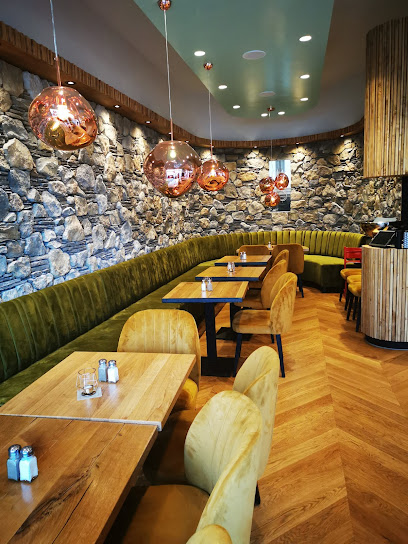
Heimat
0.4 km
Experience exquisite fine dining and exceptional wines at Heimat, Frankfurt's premier wine bar and restaurant.
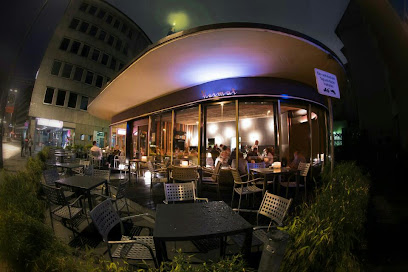
Emma Metzler
0.4 km
Discover Emma Metzler: A delightful bistro offering modern European cuisine along Frankfurt's scenic riverbank.
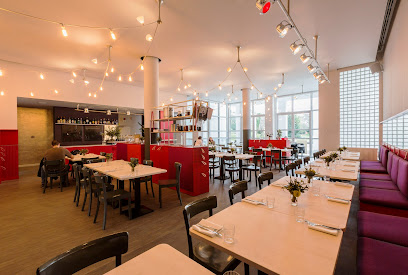
Restaurant Klosterhof
0.4 km
Experience authentic German cuisine at Restaurant Klosterhof in Frankfurt – where tradition meets taste in every dish.
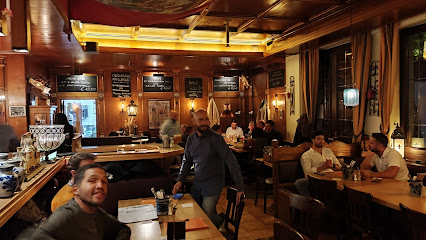
Salzkammer
0.4 km
Discover the authentic flavors of Austria at Salzkammer in Frankfurt – where every dish tells a story.
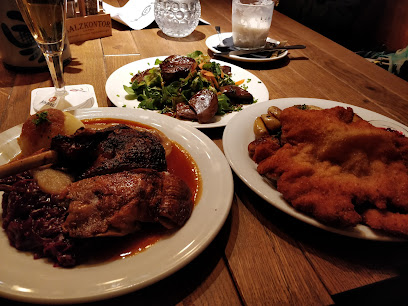
Medici
0.4 km
Discover Medici in Frankfurt: A blend of modern European elegance and Mediterranean flavors awaits you.
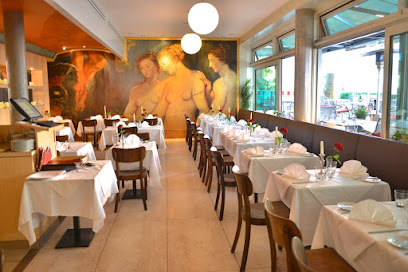
L'Arôme - Fine Cuisine Frankfurt am Main
0.5 km
Experience culinary excellence at L'Arôme in Frankfurt am Main – where innovative dishes meet elegant ambiance.
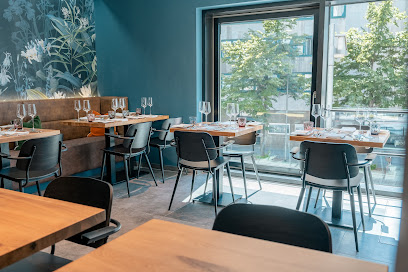
Restaurant Lohninger
0.6 km
Experience exquisite Austrian cuisine at Restaurant Lohninger in Frankfurt – where tradition meets innovation in fine dining.
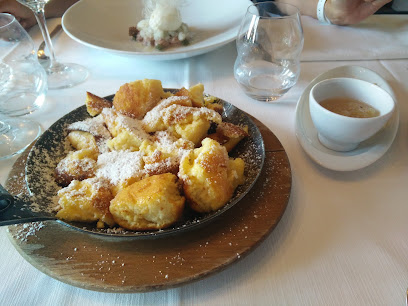
Markets, malls and hidden boutiques
Teddy-Paradise
0.1 km
Experience the magic of toys at Teddy-Paradise in Frankfurt, the ultimate destination for playful spirits and unforgettable memories.
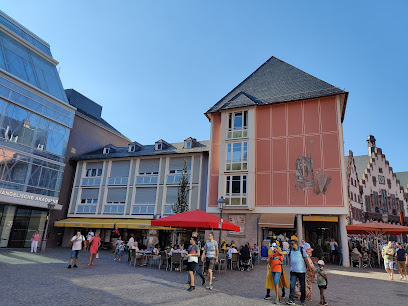
Kulturothek
0.1 km
Explore Kulturothek, Frankfurt's charming souvenir store, offering unique gifts that capture the city's vibrant culture and artistry.
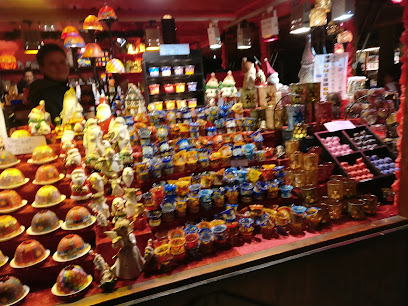
Handwerkskunst Frankfurt
0.2 km
Explore Handwerkskunst Frankfurt for unique handicrafts and gifts that embody the spirit of local artistry and craftsmanship.
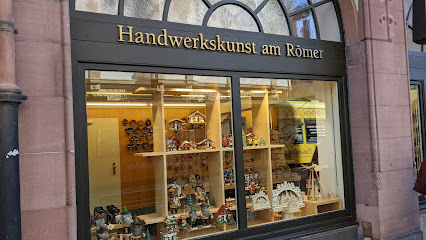
Souvenirs am Dom
0.2 km
Discover unique gifts and local crafts at Souvenirs am Dom, the perfect place to find keepsakes from Frankfurt.
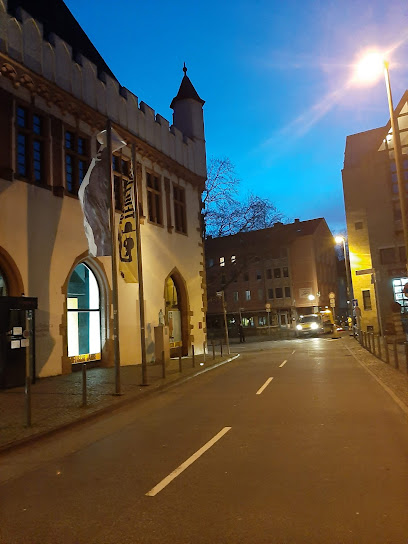
Philokalist Store
0.2 km
Explore the Philokalist Store in Frankfurt for unique gifts, handcrafted candles, and exquisite local products that reflect the city's artistic spirit.
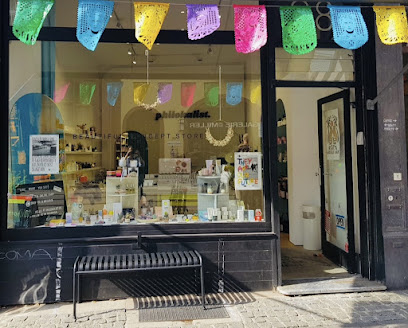
VIVIRY Abendkleider Frankfurt
0.2 km
Discover elegance at VIVIRY Abendkleider in Frankfurt, the perfect destination for exquisite evening wear and stylish accessories.
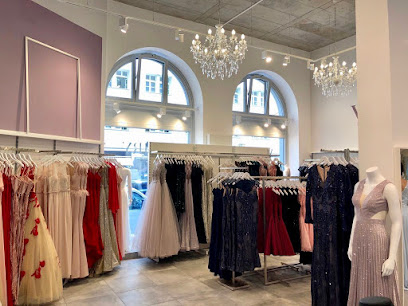
Australien Shop Frankfurt
0.3 km
Experience the essence of Australia in Frankfurt with unique leather goods, clothing, and authentic food products at the Australian Shop.
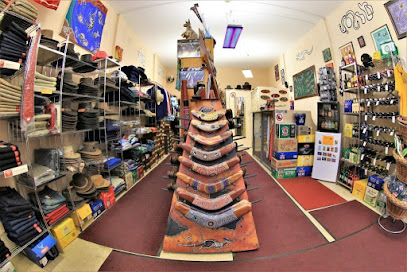
Carhartt WIP Store Frankfurt
0.3 km
Discover the essence of streetwear at Carhartt WIP Store Frankfurt, where fashion meets function in a stylish urban setting.
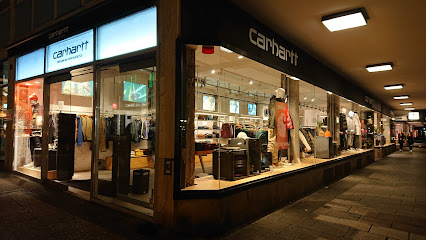
Blutsgeschwister Frankfurt – Zeiltänzerin
0.3 km
Explore Blutsgeschwister Frankfurt for unique women's clothing that blends creativity with style, nestled in the vibrant heart of the city.

Scarlett Second Hand Boutique
0.3 km
Explore sustainable fashion at Scarlett Second Hand Boutique, where unique pre-loved clothing meets vibrant Frankfurt style.
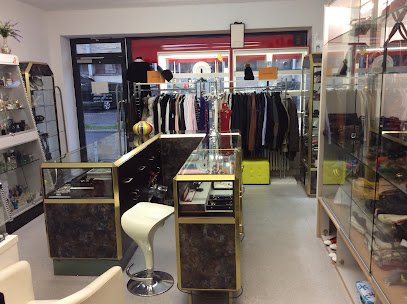
KIO - Kaufhaus im ORT
0.3 km
Explore KIO - Kaufhaus im ORT, an enchanting gift shop in Frankfurt offering unique treasures and local crafts, perfect for every traveler.
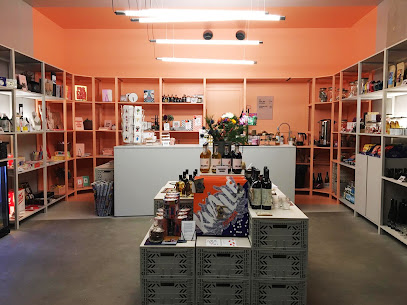
Hessen Shop Kleinmarkthalle
0.3 km
Discover local flavors and unique souvenirs at Hessen Shop Kleinmarkthalle, a vibrant market in the heart of Frankfurt.
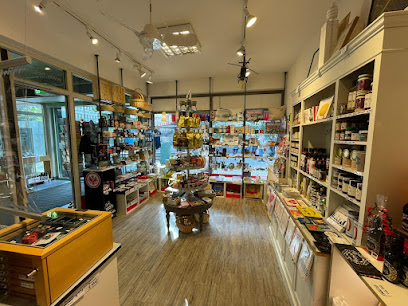
esistfreitag Concept Store
0.4 km
Explore Frankfurt's esistfreitag Concept Store for unique gifts and creative designs that capture the spirit of artistic innovation.
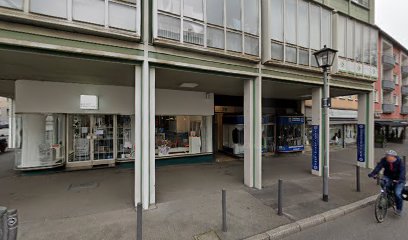
Urban Outfitters
0.4 km
Discover unique fashion and home goods at Urban Outfitters in Frankfurt, where trendy styles meet eclectic finds in a vibrant shopping environment.
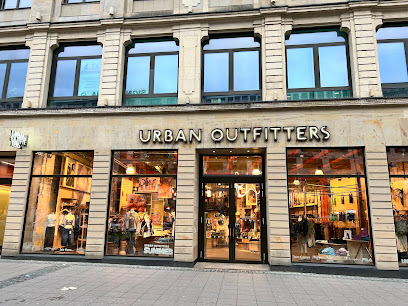
hessnatur Store Frankfurt
0.5 km
Explore eco-friendly fashion at hessnatur Store in Frankfurt, where style meets sustainability for the entire family.
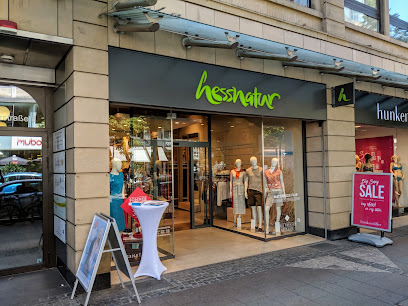
Essential bars & hidden hideouts
Rote Bar
0.3 km
Experience the best of Frankfurt's nightlife at Rote Bar, a cocktail gem offering exquisite drinks and breathtaking riverside views.
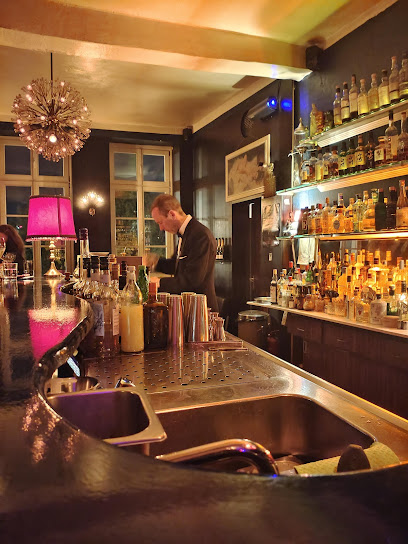
The Tiny Cup
0.3 km
Discover the cozy ambiance and unique drinks at The Tiny Cup, a top bar on the banks of the Main River in Frankfurt, perfect for relaxing with friends.
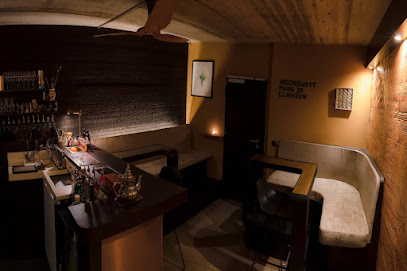
theplacetobe
0.3 km
Discover the vibrant atmosphere of The Place to Be, a quirky bar in Frankfurt offering affordable drinks and a welcoming vibe.
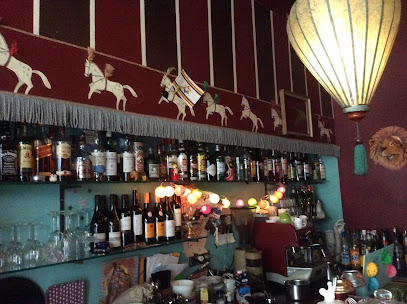
moloko+
0.4 km
Experience vibrant nightlife at moloko+, Frankfurt's trendy cocktail bar offering innovative drinks and a lively atmosphere.
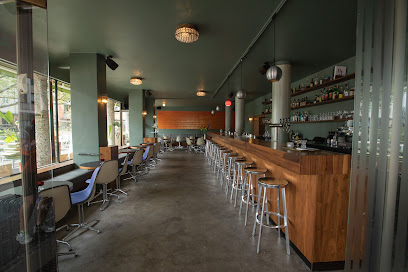
Bar Helium Frankfurt am Main
0.4 km
Experience the vibrant nightlife at Bar Helium in Frankfurt, where innovative cocktails and a lively atmosphere await you.
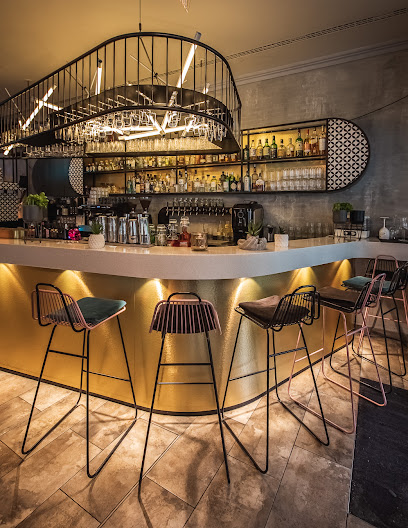
Bar Helium Frankfurt
0.4 km
Discover Bar Helium Frankfurt, where innovative cocktails and vibrant atmosphere come together for an unforgettable night out in the heart of the city.
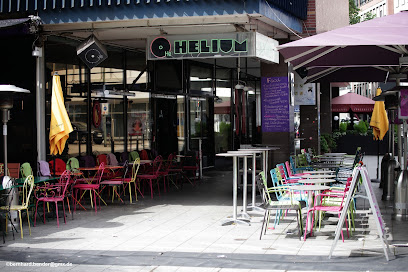
Birmingham Pub - Frankfurt am Main
0.5 km
Discover Birmingham Pub in Frankfurt: A lively Irish pub offering great drinks, traditional food, and a warm atmosphere perfect for relaxation and socializing.
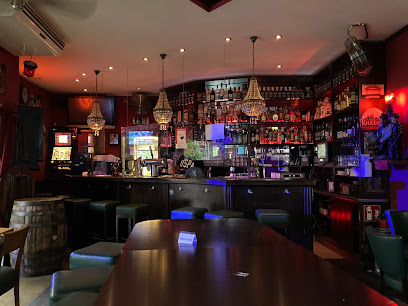
Sullivan
0.5 km
Discover Sullivan, Frankfurt's premier cocktail bar, where exquisite drinks and a vibrant atmosphere await you in the city's nightlife scene.
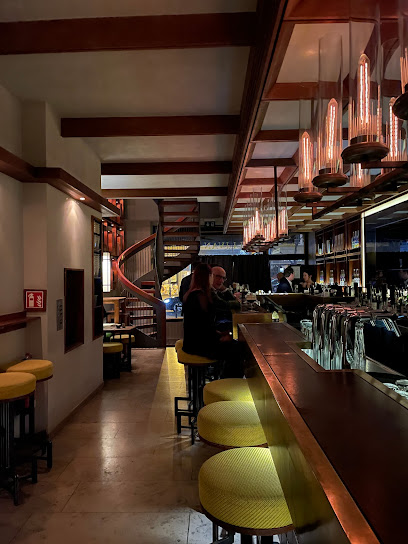
Embury Bar Frankfurt am Main
0.6 km
Discover Embury Bar in Frankfurt am Main, where innovative cocktails and live music create an unforgettable nightlife experience.
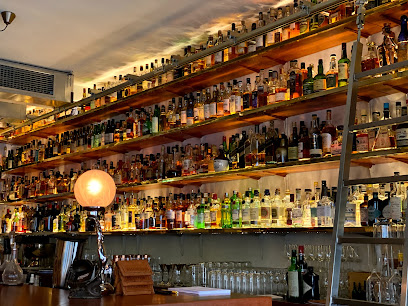
Luna Bar - Frankfurt
0.6 km
Experience the pulse of Frankfurt's nightlife at Luna Bar, where creative cocktails and an electric atmosphere come together for an unforgettable night.
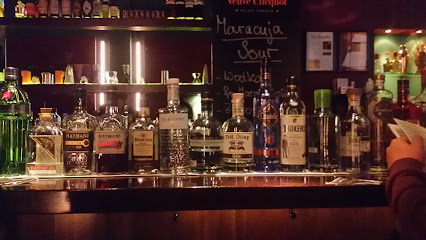
Berliner Keller Frankfurt
0.6 km
Experience the vibrant nightlife of Frankfurt at Berliner Keller, where exquisite cocktails and live music create unforgettable moments.
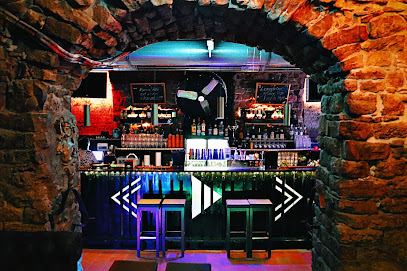
HOT
0.7 km
Explore Frankfurt's nightlife at HOT Bar, where vibrant energy meets excellent drinks in a welcoming atmosphere perfect for socializing.
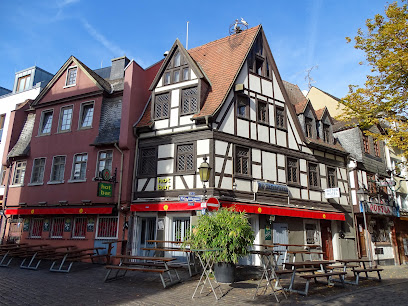
Long Island Bar
0.7 km
Discover the vibrant nightlife at Long Island Bar in Frankfurt, known for its exceptional cocktails and lively atmosphere.
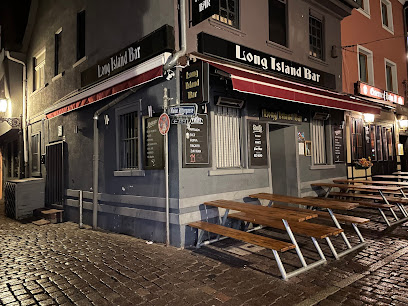
Crazy Bar
0.7 km
Discover Crazy Bar in Frankfurt, where vibrant nightlife meets affordable drinks and an unforgettable atmosphere.
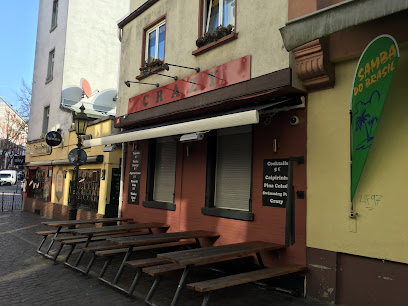
Harmonie Pub Sachsenhausen - Frankfurt am Main
0.7 km
Discover the lively ambiance and rich beer culture at Harmonie Pub Sachsenhausen in Frankfurt, a must-visit destination for all travelers.
